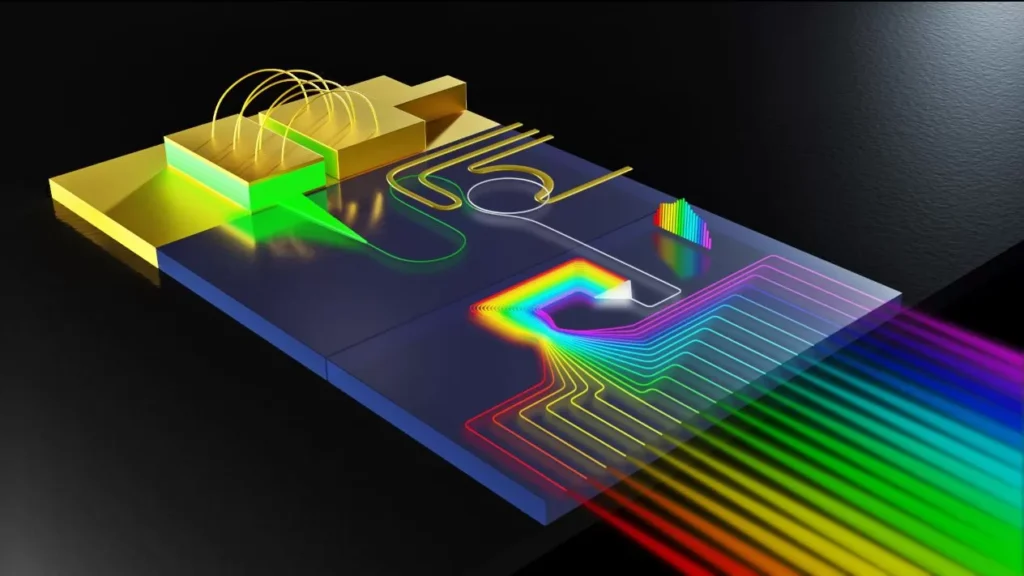A Spectrum of Innovation
Imagine a single laser that can shine in not just one colour — but in many at the same time. That’s exactly what scientists at Columbia University have achieved with their latest invention, the rainbow laser. This revolutionary chip-based device can produce multiple laser colours simultaneously, marking a major leap forward in optical technology.

From Single Colour to Full Spectrum
For decades, traditional lasers have emitted light in just one wavelength — one precise colour. While powerful, that limitation has restricted their applications. But the team at Columbia’s Fu Foundation School of Engineering and Applied Science, led by Professors Michal Lipson and Alexander Gaeta, has changed that.
Their new device generates a frequency comb, a set of evenly spaced laser wavelengths that look like a rainbow when measured on a spectrum. This means that instead of one laser beam, you get dozens of perfectly aligned colours — all emerging from a single, tiny chip.
How the Rainbow Laser Works
The Columbia researchers began with a multi-mode laser diode, a compact laser source that naturally emits several frequencies. They integrated it into a silicon photonics chip, the same kind of platform used in modern optical communications.
By using a special locking mechanism, they synchronized the laser modes to create stable, coherent light. Then, when the light passed through a microresonator on the chip, nonlinear optical effects split it into multiple wavelengths — a phenomenon known as a microcomb.
The result is a miniaturized, electrically powered multi-colour laser that can be mass-produced using existing semiconductor technology.
Why This Discovery Matters
This isn’t just a pretty rainbow — it’s a technological breakthrough with huge potential. The rainbow laser could transform several key industries:
- Telecommunications: Each laser colour can carry separate streams of data, dramatically increasing internet speed and bandwidth efficiency.
- Precision Sensing and Spectroscopy: Multiple wavelengths allow scientists to study materials, gases, and biological samples with unparalleled accuracy.
- Quantum Technology: The stable, multi-wavelength output is ideal for quantum computing, metrology, and optical clock systems.
- LiDAR and Imaging: A rainbow of laser beams could improve the accuracy of distance measurements and 3D imaging systems.
A Rainbow on a Chip
What makes the Columbia invention so remarkable is its compactness. Previous frequency comb systems required large, expensive laboratory equipment. Now, the entire system fits on a chip smaller than a fingernail — a development that could bring advanced optical technology to everyday devices.
Published in Nature Photonics in October 2025, this breakthrough demonstrates that high-power, multi-colour lasers can be made portable, efficient, and scalable for real-world use.
Shaping the Future of Light
The Columbia rainbow laser represents a shift in how we think about light. By turning a single laser into a full spectrum of possibilities, it paves the way for faster communications, smarter sensors, and more powerful computing systems.
As Professor Lipson put it, this work “brings us closer to integrating powerful light sources directly onto chips.” In other words, the future of light is not just bright — it’s vividly colourful.
Conclusion
From a single beam to a whole rainbow, Columbia University’s scientists have shown how imagination and innovation can illuminate the next era of technology. The rainbow laser isn’t just a discovery — it’s a promise of a world where light powers everything from our data to our dreams.
